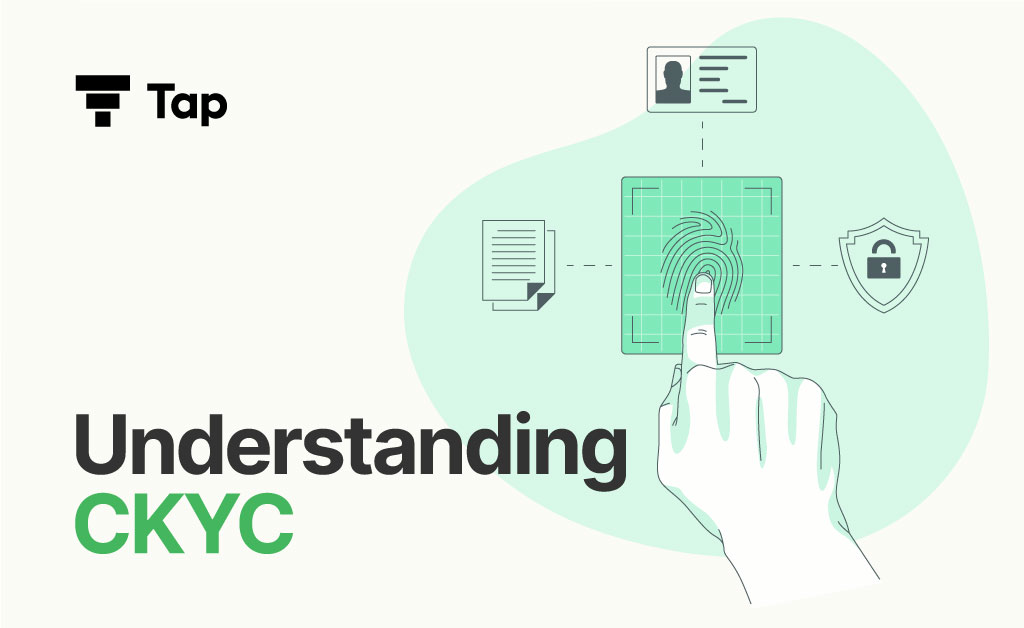What Is CKYC Number & How To Get It?

Opening a bank account or investing in financial products often involves a lot of paperwork and hassle with KYC procedures. But with Central KYC (CKYC), the Indian government has made this process much simpler. In this article, we’ll break down what CKYC is, how it helps, and how you can complete the process hassle-free. In this article, we explore what CKYC is, how it works, its benefits, and the steps to complete the CKYC process.
Understanding CKYC:
Central KYC (CKYC) is a centralised database of KYC information across India’s financial sector. Its primary objective is to reduce the burden of submitting KYC documents repeatedly when initiating a new financial relationship with different institutions. Managed by the Central Registry of Securitization Asset Reconstruction and Security Interest (CERSAI), CKYC assigns individuals a unique 14-digit CKYC number upon completing the process.
Why was CKYC introduced?
CKYC was introduced to streamline and simplify the KYC process for individuals seeking financial services. It aims to eliminate the need for repetitively submitting KYC documents when opening accounts or investing in various financial products.
Features and Benefits:
CKYC is linked with the individual’s ID proof and securely stores customer data electronically. Documents submitted for CKYC undergo verification with the issuing authorities to ensure authenticity. Any changes in KYC details are automatically updated, notifying all concerned institutions. Investors receive a unique CKYC number, eliminating the need for physical document submission for future transactions.
How CKYC Works:
The CKYC process begins when an individual submits KYC documents to a participating financial institution, such as a bank, mutual fund house, or insurance company. Upon verification, the individual is allocated a 14-digit CKYC number, which can be used for all future financial transactions with participating institutions. This seamless process simplifies investing and eliminates the hassle of repetitive document submission.
Completing the CKYC Process:
To complete the CKYC process, individuals need to follow these steps:
- Find a participating financial institution registered with CKYC.
- Submit required documents, including PAN card, Aadhaar card, and proof of address.
- Undergo document verification by the financial institution.
- Receive a unique 14-digit CKYC number upon successful verification.
Checking CKYC Number:
Individuals can check their CKYC number through various financial service providers’ websites by entering their PAN number and completing a CAPTCHA/security code verification. Once verified, the CKYC number and other details are displayed, allowing individuals to review and download their CKYC report if available.
Mandatory Compliance:
Financial institutions regulated by SEBI, RBI, IRDAI, or PFRDA are mandated to register all customers under CKYC. While existing mutual fund investors may not be required to undergo CKYC initially, future transactions with new fund houses may necessitate CKYC compliance.
Benefits of CKYC Registry:
- Enables easy verification of documents for financial companies.
- Eliminates the need for repetitive KYC document submission.
- Allows investors to update their details conveniently.
- Facilitates seamless transactions across various financial instruments.
Central KYC (CKYC) simplifies the KYC process, making financial transactions more efficient and hassle-free for individuals and institutions alike. By centralising KYC records and introducing uniform norms, CKYC enhances transparency, security, and ease of business in the financial sector. Embracing CKYC streamlines operations and fosters trust and confidence among investors, driving India’s financial inclusion agenda forward.
FAQs (Frequently Asked Questions)
1. What is CKYC (Central KYC)?
Central KYC (CKYC) is a centralised repository of Know Your Customer (KYC) information across India’s financial sector. It aims to simplify the KYC process by reducing the need for submitting KYC documents repeatedly when initiating new financial relationships with different institutions.
2. Who manages CKYC, and how does it work?
CKYC is managed by the Central Registry of Securitization Asset Reconstruction and Security Interest (CERSAI). It assigns individuals a unique 14-digit CKYC number upon completing the KYC process. This number is linked with the individual’s ID proof and securely stores customer data electronically.
3. What are the benefits of CKYC?
CKYC streamlines the KYC process, eliminates repetitive document submissions, facilitates easy verification of documents for financial companies, allows convenient updates of customer details, and enables seamless transactions across various financial instruments.
4. How can individuals complete the CKYC process?
To complete the CKYC process, individuals need to:
- Find a participating financial institution registered with CKYC.
- Submit required documents such as PAN card, Aadhaar card, and proof of address.
- Undergo document verification by the financial institution.
- Receive a unique 14-digit CKYC number upon successful verification.
5. Can existing investors in financial products avoid CKYC?
While existing mutual fund investors may not be required to undergo CKYC initially, future transactions with new fund houses or financial institutions may necessitate CKYC compliance.
6. How can individuals check their CKYC number?
Individuals can check their CKYC number through various financial service providers’ websites by entering their PAN number and completing a CAPTCHA/security code verification. Once verified, the CKYC number and other details are displayed, allowing individuals to review and download their CKYC report if available.
